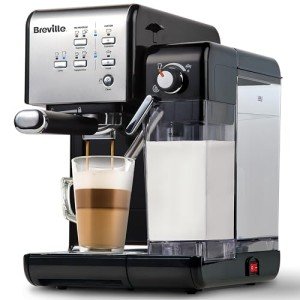Understanding Dual Boiler Espresso Machines: A Comprehensive Guide
Espresso is an art as much as it is a science. For coffee enthusiasts and baristas alike, attaining the perfect shot of espresso necessitates precision and control over developing variables. One of the most efficient methods to accomplish this accuracy is through the use of dual boiler espresso machines. This post explores the performance, advantages, and considerations of dual boiler espresso machines for both beginners and knowledgeable coffee enthusiasts.
What is a Dual Boiler Espresso Machine?
A dual boiler espresso machine includes two separate boilers: one for brewing espresso and the other for steaming milk. This style allows the user to brew coffee and steam milk all at once, attaining optimum temperature control for both procedures. This is essential for creating lattes, coffees, and macchiatos, where both active ingredients are important.
Table 1: Key Components of Dual Boiler Espresso Machines
| Element | Function |
|---|---|
| Espresso Boiler | Warms water to the ideal developing temperature (around 190 ° F) |
| . Steam Boiler | Warms water to a greater temperature level (around 250 ° F) for steaming milk. |
| PID Controller | Regulates the temperature of the boilers for precision brewing. |
| Group Head | Where the coffee premises sit and warm water travels through. |
| Steam Wand | Provides steam to froth milk. |
Benefits of Dual Boiler Espresso Machines
1. Synchronised Brewing and Steaming
The most significant advantage of dual boiler espresso machines is the capability to brew espresso and steam milk at the same time. This effectiveness is particularly advantageous in hectic environments, such as cafes, where speed and quality are critical.
2. Consistent Temperature Control
Dual boiler machines often feature advanced PID (Proportional Integral Derivative) controllers that maintain a consistent temperature level throughout the brewing procedure. Consistency is important in espresso making to make sure the very best extraction, hence boosting flavor and scent.
3. Customization and Versatility
With 2 separate boilers, users can customize the temperature settings for both espresso developing and milk steaming. This indicates various types of coffee, such as lighter or darker roasts, can be prepared completely to match private taste profiles.
4. Suitable for Advanced Techniques
For those thinking about latte art or other advanced methods, a dual boiler espresso machine supplies the versatility to work with different milk textures while likewise extracting espresso. This versatility makes it an attractive option for baristas who desire to hone their skills.
5. Durability and Durability
Many dual boiler machines are developed with high-quality products designed for durability. They are frequently made of stainless-steel and feature long lasting elements, making them a rewarding financial investment for anyone major about coffee.
Downsides of Dual Boiler Espresso Machines
Regardless of their various benefits, dual boiler machines can have some disadvantages:
- Higher Cost: Dual boiler machines tend to be costlier than their single-boiler counterparts, which might not appropriate for casual coffee drinkers.
- Size and Space: These machines might inhabit more countertop space than others, making them less ideal for little cooking areas.
Table 2: Key Considerations When Choosing a Dual Boiler Espresso Machine
| Consideration | Explanation |
|---|---|
| Budget | Dual boiler machines can range from ₤ 1,000 to over ₤ 4,000. |
| Size | Check your cooking area area before purchasing. |
| Brand Reputation | Try to find well-reviewed brand names with good client assistance. |
| Functions | Consider what functions are vital (e.g., PID controller, volumetric options). |
| Upkeep | Some machines might require more routine upkeep than others. |
Frequently asked questions
1. Are dual boiler espresso machines worth the investment?
Yes, they are worth the investment for serious coffee enthusiasts or professional baristas who value accuracy in espresso extraction and milk steaming.
2. How do I preserve a dual boiler espresso machine?
Routine upkeep consists of descaling the machine, cleaning up the group head, and guaranteeing that the steam wand is totally free of milk residue. Seek advice from the manufacturer's manual for particular standards.
3. Can I use a dual boiler espresso machine for other developing techniques?
Typically, dual boiler machines are designed primarily for espresso. However, they can usually brew quality drip coffee and other styles with the right settings and adjustments.
4. What brands are understood for their dual boiler machines?
Some reputable brand names include La Spaziale, Breville, and ECM. Pod Espresso Machines has its own distinct functions and pricing.
5. What is the typical life expectancy of a dual boiler espresso machine?
With proper care and maintenance, a dual boiler machine can last over a decade, making it a long-lasting investment for coffee fans.
Dual boiler espresso machines represent the pinnacle of espresso-making innovation, merging art and science into one compact device. While they require a greater initial investment and more counter top space, the advantages they use-- such as simultaneous brewing and steaming, accurate temperature control, and durability-- make them ideal for serious coffee lovers. Understanding the functions, benefits, and factors to consider for these machines will enable consumers to make informed choices and elevate their coffee developing experience. Whether in the house or in a busy café, a dual boiler machine can really enhance the art of espresso.

